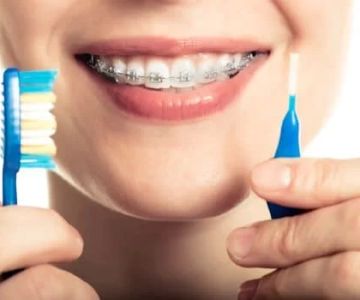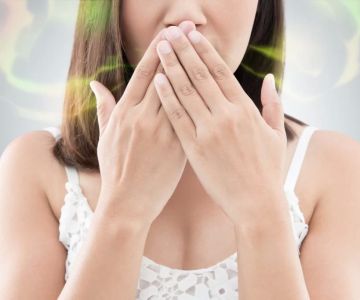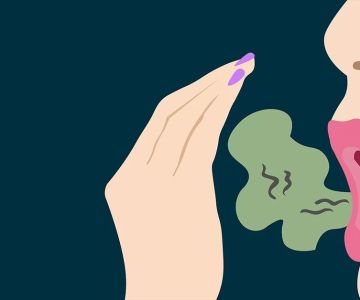1. The Impact of Poor Oral Hygiene on Public Health
Oral hygiene is essential for maintaining not just a bright smile, but also overall health. Neglecting dental care can lead to a range of serious health problems, including tooth decay, gum disease, and even more severe systemic issues like heart disease. Despite the importance of good oral hygiene, many Americans continue to neglect their oral health. But which states have the highest rates of poor oral hygiene, and what can be done to address this growing concern? This article dives deep into the state of oral hygiene across the United States, identifying areas with the poorest oral health, the reasons behind this, and how individuals and communities can improve their oral care habits.
2. States With the Worst Oral Hygiene Rates
According to recent studies, oral hygiene rates vary widely from state to state. Certain states consistently report higher levels of poor oral hygiene, often linked to factors such as income, access to dental care, and education levels. Some states have become notorious for poor oral hygiene statistics, with residents experiencing higher rates of tooth decay and gum disease compared to others. Understanding the states that struggle the most with oral health is the first step in combating this problem.
2.1 The State of Oral Hygiene in Southern States
Southern states such as Mississippi, Louisiana, and Alabama often rank among the worst when it comes to oral health. In these states, factors such as limited access to affordable dental care, lower income levels, and cultural attitudes toward oral hygiene contribute to poor dental habits. Residents in these areas are more likely to skip regular dentist visits, and preventive care such as cleanings and check-ups are often seen as non-essential. The prevalence of untreated dental problems, including tooth decay and gum disease, is much higher in these states.
2.2 The Rural-Urban Divide in Oral Hygiene
Rural areas, particularly in states like West Virginia, Kentucky, and Arkansas, also show higher rates of poor oral hygiene. Access to quality dental care is often limited in these regions due to a lack of local dentists and transportation issues. In many rural areas, dental services are simply not as accessible, forcing individuals to either go without care or travel long distances for appointments. Furthermore, rural populations tend to have lower incomes, which can make dental care unaffordable for many families.
3. Factors Contributing to Poor Oral Hygiene
Understanding why some states have poor oral hygiene rates requires a closer look at the underlying factors contributing to these disparities. While some of the causes are socio-economic, others are behavioral or cultural. These factors together create an environment where maintaining proper oral hygiene is either too difficult or not prioritized.
3.1 Lack of Access to Dental Care
One of the most significant factors contributing to poor oral hygiene is the lack of access to dental care. According to the Centers for Disease Control and Prevention (CDC), millions of Americans lack access to dental insurance, and many live in areas where dental professionals are in short supply. This is especially common in rural areas and certain lower-income urban neighborhoods. Without affordable access to dental professionals, individuals are less likely to seek out regular check-ups, leading to untreated oral health problems.
3.2 Socioeconomic Status and Education Levels
Socioeconomic status plays a crucial role in oral health. People with lower incomes are less likely to afford dental care or have access to dental insurance. Education also plays a part, as individuals with lower education levels may not fully understand the importance of good oral hygiene or may lack the resources to practice it. These factors can lead to a higher incidence of untreated cavities, gum disease, and other oral health issues.
3.3 Cultural and Behavioral Attitudes
Cultural attitudes toward dental care can influence oral hygiene habits as well. In some areas, people may not prioritize regular brushing, flossing, and dental visits because they either don't see the long-term importance or believe that dental issues will resolve on their own. Behavioral habits, such as a high consumption of sugary foods and drinks, can also contribute to tooth decay, especially in states with poor oral health.
4. The Economic and Health Impacts of Poor Oral Hygiene
The consequences of poor oral hygiene extend beyond just bad breath or cavities. Neglecting oral health can lead to more serious issues, such as gum disease, which has been linked to an increased risk of heart disease, diabetes, and respiratory infections. Additionally, poor oral hygiene can result in lost workdays, lower productivity, and increased healthcare costs, both at the individual and community levels.
4.1 The Financial Toll of Poor Oral Health
The economic burden of poor oral hygiene is substantial. In states with higher rates of untreated dental problems, there is a higher incidence of emergency dental visits, which are often much more expensive than preventive care. Additionally, untreated oral issues can lead to other health problems that require more intensive and costly treatments. For individuals and families, this often means choosing between paying for dental care and other essential needs.
4.2 The Connection Between Oral Health and Overall Wellness
Oral health has a significant impact on overall wellness. Poor oral hygiene can lead to infections that affect the entire body, especially if they enter the bloodstream. Studies have shown that gum disease and tooth decay are linked to heart disease, stroke, and even premature birth in pregnant women. For many individuals, oral health issues become a part of their broader healthcare concerns, underscoring the importance of addressing oral hygiene on a national scale.
5. How to Improve Oral Hygiene in States with Poor Oral Health
While it may seem overwhelming, there are steps that individuals and communities can take to improve oral hygiene in states with poor oral health. From increasing awareness to improving access to dental care, several strategies can help reduce the prevalence of oral health issues.
5.1 Improving Access to Affordable Dental Care
One of the most important steps in improving oral hygiene is ensuring that more people have access to affordable dental care. This can be achieved by expanding Medicaid coverage for dental services, offering more affordable dental insurance options, and creating community dental programs. Mobile dental clinics and tele-dentistry can also help serve rural areas, ensuring that everyone has access to the care they need.
5.2 Promoting Preventive Dental Care
Education is key when it comes to improving oral hygiene. Schools, community organizations, and healthcare providers can play an important role in teaching individuals the importance of regular brushing, flossing, and dental check-ups. Programs that provide free or low-cost dental screenings, cleanings, and fluoride treatments can help prevent oral health issues before they become serious problems.
5.3 Encouraging Healthy Habits
Encouraging healthier dietary habits, such as reducing sugar intake, can also help improve oral health. Additionally, educating the public on the long-term benefits of good oral hygiene habits, such as reducing the risk of gum disease and tooth loss, can motivate people to take better care of their teeth and gums.
6. Conclusion
States with poor oral hygiene are facing a serious public health issue that impacts not only individual health but also overall wellness and economic stability. By addressing the underlying causes of poor oral hygiene, such as limited access to care and low health literacy, we can begin to make significant improvements. By promoting better education, increasing access to dental services, and encouraging healthier behaviors, we can improve the oral health of individuals in these states and across the nation. Remember, your smile is just as important as any other aspect of your health, so take the necessary steps to maintain it!







 Westgate Dental Arts
Westgate Dental Arts Coventry Family Dental
Coventry Family Dental Familia Dental
Familia Dental Dr. Daniel S. Fife, DDS
Dr. Daniel S. Fife, DDS Dentistry At Suburban Square: Michael I. Wollock, DMD
Dentistry At Suburban Square: Michael I. Wollock, DMD Comfort Care Dental
Comfort Care Dental The Importance of Oral Health Education During Pregnancy for a Healthy Pregnancy
The Importance of Oral Health Education During Pregnancy for a Healthy Pregnancy Why Skipping Dental Checkups Can Lead to Bigger Oral Health Problems
Why Skipping Dental Checkups Can Lead to Bigger Oral Health Problems Best Tips for Brushing Your Teeth Properly for Healthy Gums: Essential Techniques for Oral Health
Best Tips for Brushing Your Teeth Properly for Healthy Gums: Essential Techniques for Oral Health Advantages of Porcelain Dental Restorations
Advantages of Porcelain Dental Restorations How Can Diabetes Cause Tooth and Gum Problems? Preventing and Managing Oral Health Issues
How Can Diabetes Cause Tooth and Gum Problems? Preventing and Managing Oral Health Issues Healthy Habits for Promoting Good Oral Health and Hygiene: Tips for a Healthy Smile
Healthy Habits for Promoting Good Oral Health and Hygiene: Tips for a Healthy Smile